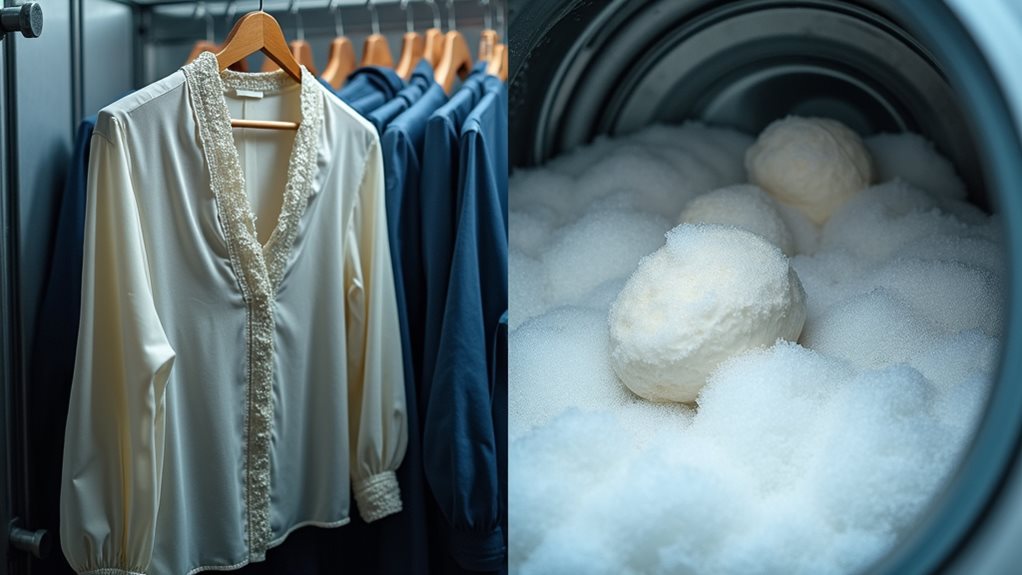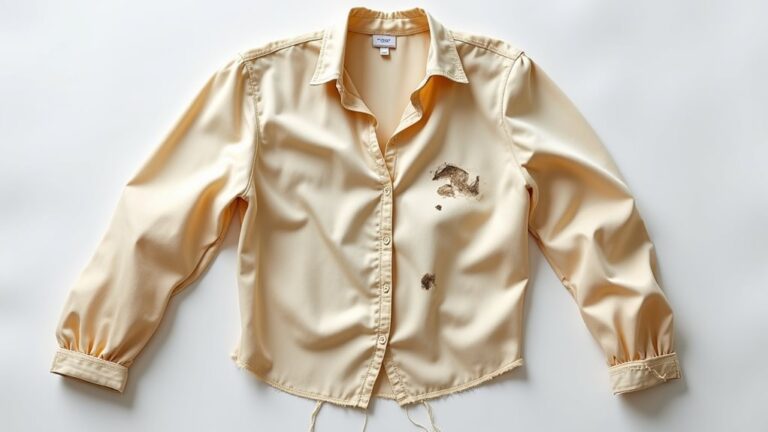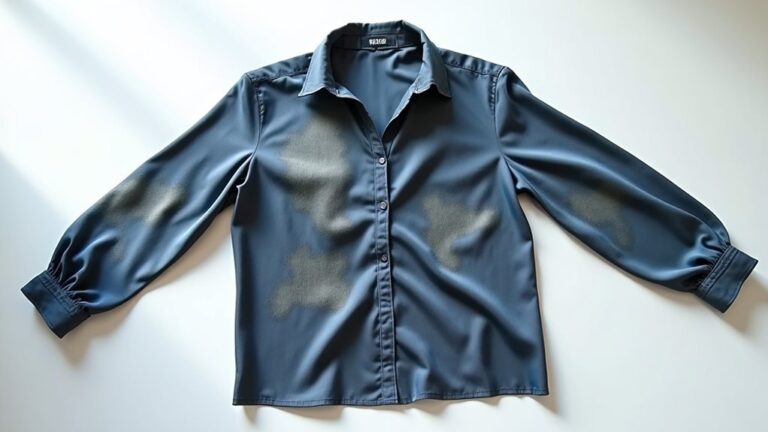When you’re staring at your favorite silk blouse wondering whether to toss it in the washer, here’s what’ll save you from disaster: dry cleaning uses chemical solvents like perchloroethylene instead of water, making it perfect for delicate fabrics that would shrink or lose their shape in your machine. Regular washing relies on water and detergent agitation, which works great for sturdy cotton but can destroy wool, silk, and structured garments that need gentler care to maintain their original beauty.
The Chemical Vs Water-Based Cleaning Process
When I first discovered the difference between dry cleaning and regular washing, I felt like I’d stumbled upon some secret chemistry experiment that explained why my favorite silk blouse always looked perfect after the cleaners but turned into a wrinkled mess when I tried washing it at home 😅.
That lightbulb moment when you finally understand why your delicate fabrics come back looking flawless from professional cleaners but disasters happen at home.
The magic lies in chemical solvents like perchloroethylene, which dissolve oil-based stains without water’s harsh effects on delicate fabrics.
While water-based cleaning relies on agitation and detergent to lift dirt, dry cleaning gently tumbles your fabrics in these specialized solvents, guaranteeing preservation of texture and color.
You’ll find that laundry works wonderfully for sturdy cotton, but when stain removal matters for silk or wool, chemical cleaning protects what water would destroy.
After the cleaning cycle, the process includes solvent distillation to purify and recycle the cleaning solution for future use.
Fabric Suitability and Material Considerations
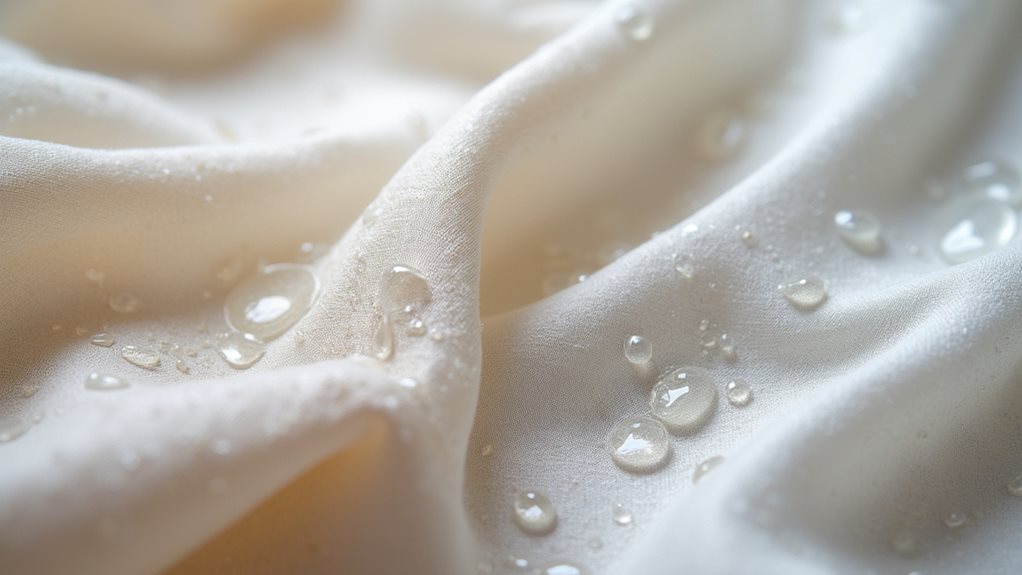
Understanding your fabric’s personality feels a lot like getting to know a new friend – some are tough enough to handle whatever you throw at them, while others need kid-glove treatment to stay beautiful.
When you’re deciding between dry cleaning and machine washing, fabric characteristics become your roadmap. Delicate fabrics like silk, wool, and cashmere thrive with specialized solvents that won’t cause water damage, while cotton and polyester clothing items can handle regular machine washing without breaking a sweat.
Here’s what I’ve learned: oil-based stains on your favorite silk blouse need dry cleaning’s gentle touch, but water-soluble stains on sturdy fabrics wash out easily at home.
Structured garments like suits and formal wear also benefit significantly from dry cleaning since it prevents shrinkage and damage while maintaining their tailored shape and appearance.
Preserving quality means matching your cleaning method to your fabric’s unique needs.
Stain Removal Effectiveness and Methods
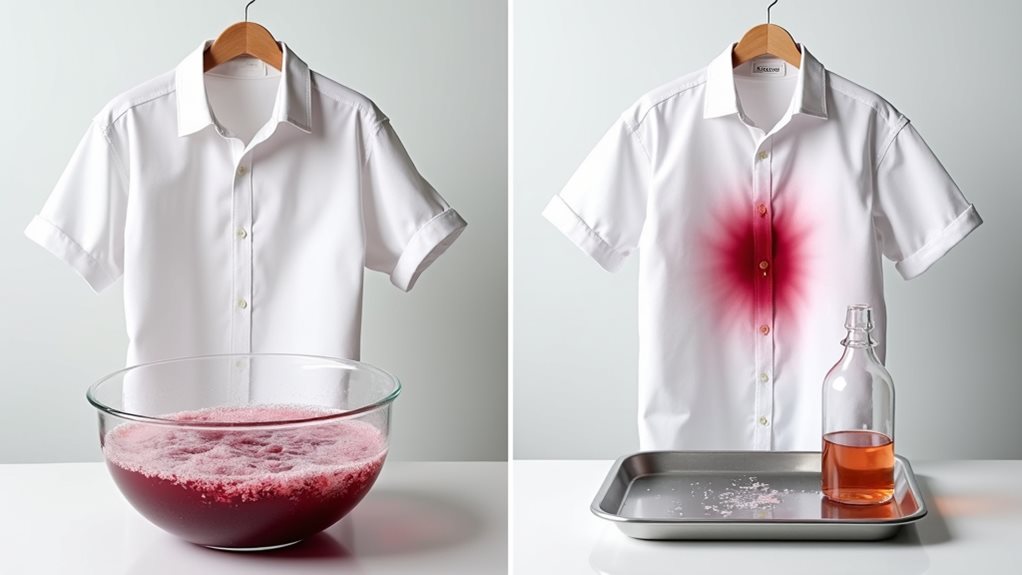
Imagine this: you’re staring at your favorite shirt with a mysterious stain that looks like it survived a food fight, and you’re wondering whether to toss it in the washing machine or make that dreaded trip to the dry cleaner.
Here’s the thing about stain removal – it’s not one-size-fits-all. Dry cleaning excels at tackling oil-based stains like makeup and grease using specialized solutions, while washing handles water-based stains from dirt and sweat more effectively.
Stain removal isn’t universal – dry cleaning conquers oil-based marks while regular washing tackles water-based stains more effectively.
Consider these key differences:
- Oil vs. water stains: Dry cleaning dissolves stubborn grease; washing removes sweat-based marks
- Delicate fabrics: Professional cleaners protect sensitive materials from damage during treatment
- Pre-treatment options: Specialized solutions target specific stain types for better results
However, some challenging marks like ink, paint, or set-in stains may prove more difficult to remove completely, regardless of the cleaning method chosen.
Smart garment care means choosing the right method for your stain’s personality!
Cost Analysis and Environmental Impact

Beyond the stain-fighting prowess lies another reality that’ll hit your wallet and conscience in equal measure – the true cost of keeping your clothes pristine extends far beyond that initial price tag.
Dry cleaning costs considerably more than traditional washing, typically running $10-30 per garment compared to your $1-5 home loads, but here’s where it gets interesting.
Those chemical solvents creating environmental impact concerns might make you wince, yet regular washing isn’t guilt-free either, consuming 15-40 gallons per load.
However, dry cleaning extends garment lifespan for delicate fabrics, potentially saving money long-term, while energy efficiency improvements in washing machines help reduce water consumption.
You’ll need to weigh immediate cost against durability – sometimes investing more upfront protects both your favorite pieces and your future budget.
The high pricing stems from specialized equipment requirements, costly chemical solvents, extensive staff training for hazardous material handling, and strict environmental regulations that dry cleaners must navigate.
Garment Longevity and Quality Preservation
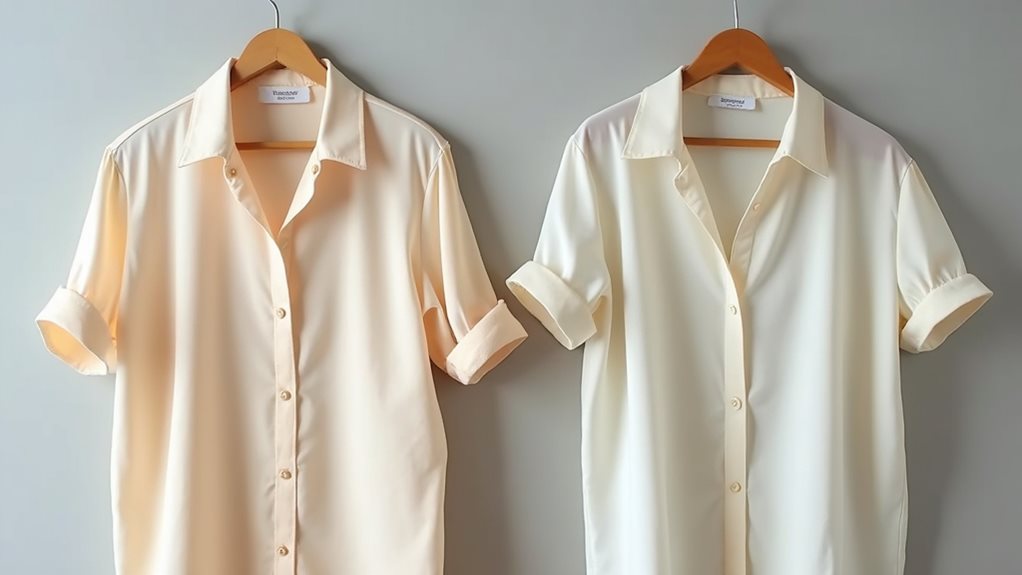
While you might think that $25 dry cleaning bill is highway robbery, there’s something almost magical about how those gentle chemical solvents treat your favorite silk blouse like a spa day instead of a battlefield.
Regular machine washing creates wear and tear that’ll have your delicate fabrics looking like they’ve survived a wrestling match, but dry cleaning’s quality preservation methods actually extend garment longevity by protecting against shrinkage and distortion.
Here’s what proper maintenance through dry cleaning accomplishes:
- Prevents color bleeding and fabric damage that destroys your investment pieces
- Removes stubborn oil-based stains that regular washing simply can’t tackle
- Maintains original shape and texture of expensive garments
Following care instructions isn’t just manufacturer suggestions – it’s your wallet’s best friend! 😉
This specialized approach is particularly crucial for formal wear and structured garments with interfacing components that would be destroyed in conventional washing machines.

